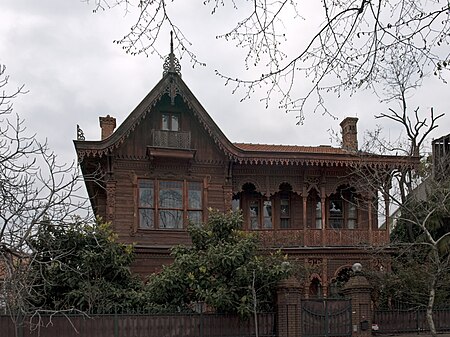Selamsız

Selamsız is a quarter in Üsküdar district on the Asian side of Istanbul, Turkey. It corresponds more or less to the current officially recognized neighborhoods of Selamiali and Muratreis. These neighborhoods are bounded on the north by Sultantepe, on the north and northeast by İcadiye, on the east by Altunizade, on the south by Valide-i Atik, and on the west by Mimarsinan. The name selamsız means "without a selam" or "not giving a greeting; rude." The name comes from the Sheikh Selami Ali, who gave his name to a mosque, a dervish lodge, a public bath, and a public fountain in the quarter. Selami Ali was called Selamsız because he was known for not looking at or greeting people when he was in public.
Excerpt from the Wikipedia article Selamsız (License: CC BY-SA 3.0, Authors, Images).Selamsız
Gazi Caddesi,
Geographical coordinates (GPS) Address Nearby Places Show on map
Geographical coordinates (GPS)
| Latitude | Longitude |
|---|---|
| N 41.023486111111 ° | E 29.029269444444 ° |
Address
çamlıca et ve tavuk
Gazi Caddesi
34664
Türkiye
Open on Google Maps







